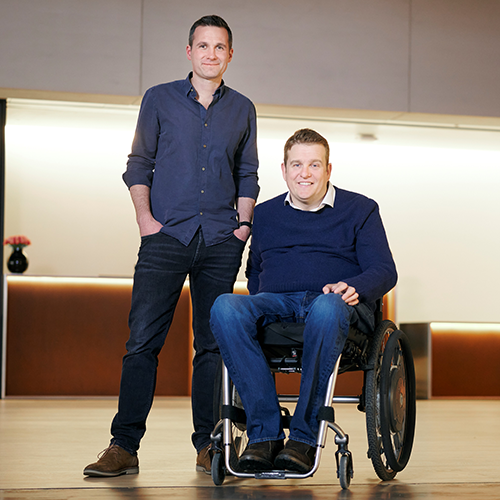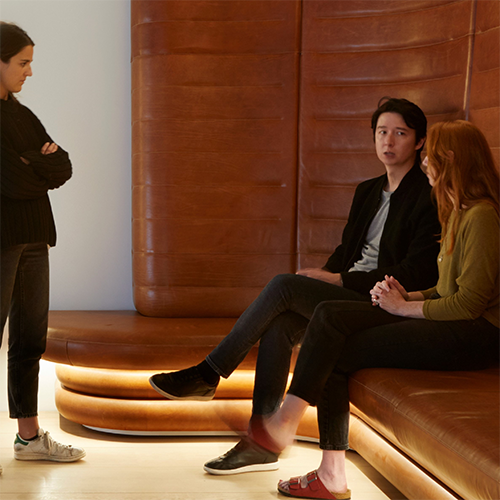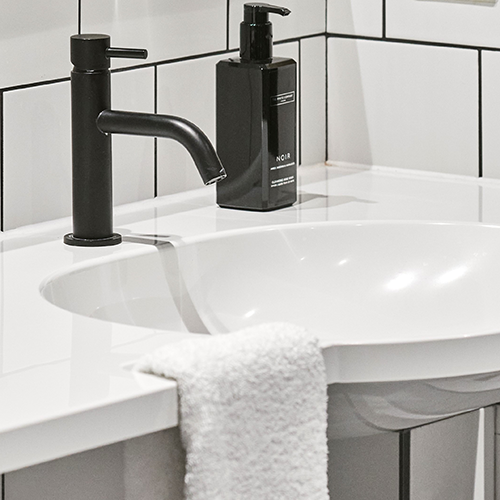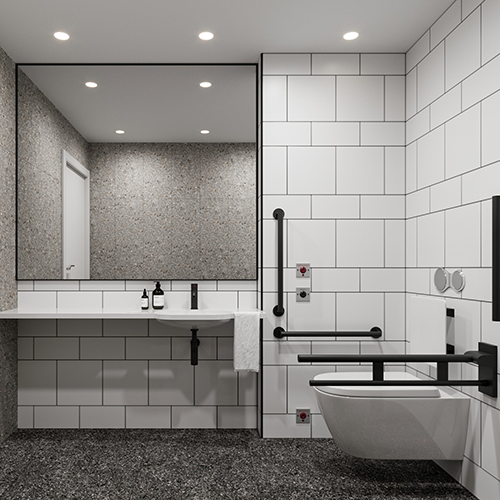Accessibility is simple - organising spaces that can be used by everyone. It has a strong impact on how we experience the world around us, underpins a culture of inclusion and shapes our values. But the reality of accessibility is complicated.
In this guest blog, Jason Slocombe, Senior Inclusive Design Consultant and Neurodiversity Design Specialist working for inclusive designers, Motionspot, talks about how to create calm and beautiful spaces to better the needs of neurodivergent groups. Jason is also an architect with a focus on the impact buildings have on health and wellbeing and an advocate of neuro-accessible spaces.
There are over 14 million disabled people in the UK. We have relatively good provision for physical access within the Building Regulations and British Standards, however with only 8% of disabled people using a wheelchair, a large segment of the disabled community is being overlooked. Despite it being estimated that 80% of all disabilities are invisible, there is currently very little guidance tailored to people with invisible disabilities and neurodivergent groups.
There is a misconception that people with neurodivergence are just sensitive, but it’s much more complex than that and there is a huge diversity of experience within the neurodivergent spectrum. This is because neurodivergence impacts physical, sensory, social interaction, communication, wellbeing, cultural and gender needs, as well as mental health, and people experience differences in hyper and hyposensitivity across different senses. In turn these are impacted by the way spaces are designed, meaning that mismatches of reactivity and environment are common. So, the question is: how can spaces be designed to better meet the needs of people with neurodivergence?
Sensory accessibility deals with sensory interaction such as light, sound, touch, taste, and smell, as well as the vestibular and proprioceptive senses which involve balance and body awareness in space, and inward-facing interoceptive senses which are our perception or sensation of internal states such as time passing, thermal regulation and even gut feeling. Buildings and spaces can have a huge impact on all aspects of sensory accessibility.
Acoustic environment
Top of the list in sensory design is unsurprisingly noise. Noise can be a real problem for neurodivergent groups in busy spaces, particularly expansive open plan layouts containing mixed function zones such as an airport or shopping centre with eating areas near waiting lounges. This makes the level of noise unpredictable in a space at any one given time.
Noise is often dealt with as a mitigation strategy in the later stages of the design process, but this is not the ideal solution for reducing it. Instead, dealing with noise at the concept stage by using separation zoning is a far more effective approach. For example, acoustic panels in the form of natural material screens such as cork, timber, and large planters are a good option for creating quiet zones. As with all good inclusive design, these not only function for minority groups, but also deliver a strong aesthetic which improves the experience of using the space for everyone.
Reducing visual noise
Another important sensory consideration is visual noise. Patterns are used extensively in many interior spaces to create character, interest, and liveliness, especially in retail spaces where organisations regularly invest huge sums in visual merchandising strategies that are designed to drive sales. However, some patterns can be a problem for neurodivergent people. At the extreme end, high contrast stripes and geometric patterns can create acute sensory overload particularly for people with visual sensitivities, epilepsy, or migraine sufferers.
Humans evolved in natural landscapes, meaning that our eyes process natural forms most efficiently. Conversely some complex patterns in the built environment require higher metabolic bandwidth to process, which is uncomfortable and tiring. This is one of the key reasons why access to, and views of nature have a calming and regenerative effect. However, incorporating these in the design of large buildings like airports and underground shopping centres is often not possible. Image analysis research into people’s responses to commercial flooring patterns show that some have negative effects, but to a greater degree for neurodivergent groups. Natural materials and forms that typically contain low levels of visual noise are therefore a much better option as they are easier for the brain to process, making using the space much more enjoyable for everyone to use.
One area which is rarely addressed, even in the inclusive design community is how the senses work together, for example, a loud environment affecting the proprioceptive senses. In the event of a loud fire alarm sounding this could impact someone’s balance and depth perception and make them momentarily freeze and therefore reduce their capacity to exit a building safely. Loud alarms should therefore not be located immediately next to emergency exits and stairs and walkways should have low sensory environments.
Getting entrances and sanitary facilities right and adding recalibration spaces are initiatives that most buildings can accommodate and the elements that are likely to have the greatest positive impact on the neurodivergent groups who use them


An easy entrance
The route to a building’s entrance from public transport stops and car parks should be as direct as possible, with a clear line of sight, good lighting, defined footpaths, unambiguous signage, and an intuitive direction of travel. Entrances and exits should be safe to use by people with reduced external awareness and set back from busy throughfares. Or where that is not possible, secondary quieter routes should be offered. Colour, lighting, signage, and recognisable forms should all be deployed to make locating the entrance easier including at different times of the day and in a variety of weather conditions. Entrance doors should be easy to use, so an automatic sliding operation with extended stay-open times and clear space on both sides is the preferred choice. Revolving doors and reflective surfaces near entrances should be avoided. Once inside, a transition zone with accessible seating between the entrance the internal areas will help people who need more time to adjust between outside and inside spaces.
Creating welcoming sanitary facilities
A sense of security when using sanitary facilities can be achieved through adequate separation between cubicles, solid full-length doors with robust privacy locks with an emergency release, and the in-cubicle presence of emergency alarms that are both audible and visible. Optimum facilities for neurodivergent groups including those with proprioception, dexterity, and coordination differences will have more space to move around in. This is beneficial for wheelchair access as well. Key surfaces such as walls, floors and ceilings should contrast sufficiently with one another so that people can better assess the extent of a space. It should also be noted that matt finishes are generally easier to process than gloss ones.
On a practical level, hooks and shelves are useful to hold belongings including colostomy bags while using the facilities and should be reachable from seated and standing positions. If any sanitary equipment is not intuitive to operate, such as hands-free tap sensors, easy to read and understand instructions should be displayed in the immediate vicinity.
The sensory considerations made elsewhere in the building should also be present across all sanitary facilities. For example, the noise produced by hand dryers can be problematic for people with noise sensitivities, so paper towels are recommended. If dryers are used, they should be located away from entrances and cubicles, and their decibel levels reduced. Lighting should be well distributed with minimal glare to help people distinguish between features. Lights and lighting controls should be specified as flicker free, and strobe lighting always avoided. Lighting controlled by timers should have extended on-times to allow people to use the space for extended periods without obvious movement.


Recalibration and seating
An opportunity to recalibrate from busy spaces is a vital addition to the built environment for many people including those with anxiety. These private spaces may contain moveable furniture, adjustable blinds, lighting, sound, and temperature controls into the overall design to give the user full sensory control of their environment.
Buildings should aim to offer a range of seating for people with different sensory profiles, including furniture that moves. Because the senses are connected, moving and the sense of movement, such as rocking, is a common coping mechanism for people with autism, ADHD, and dyspraxia to regulate their senses and anxiety levels. Furniture that accommodates movement as well as being a supportive place to sit includes leg hammocks, wobble chairs, swings, and even chairs that reconfigure to allow several ways of sitting. Ultimately, a good seating area for a person with neurodivergence is the one that they feel most comfortable in. This is likely to be one where their back is not facing an open area that makes it difficult to see and locate what is behind you, and which can raise both sensitivity and anxiety. This is especially true for people who would find an unexpected touch or social interaction a painful or unpleasant experience.
Designing inclusively for neurodivergent groups starts and ends with an engagement process to understand the nuances of their lived experiences and what is needed to design a universally welcoming environment. Building owners through to designers should therefore involve and actively listen to the very people who will be most impacted by the design choices they make. Inclusive spaces that consider neurodivergence and enable a cross-section of people to enjoy it will result in a more diverse, inclusive and rich society that benefits everyone.
About Motionspot

Motionspot is an accessible design specialist creating beautifully inclusive spaces and supplying unique innovative accessible products that change lives.
Find out more here.





